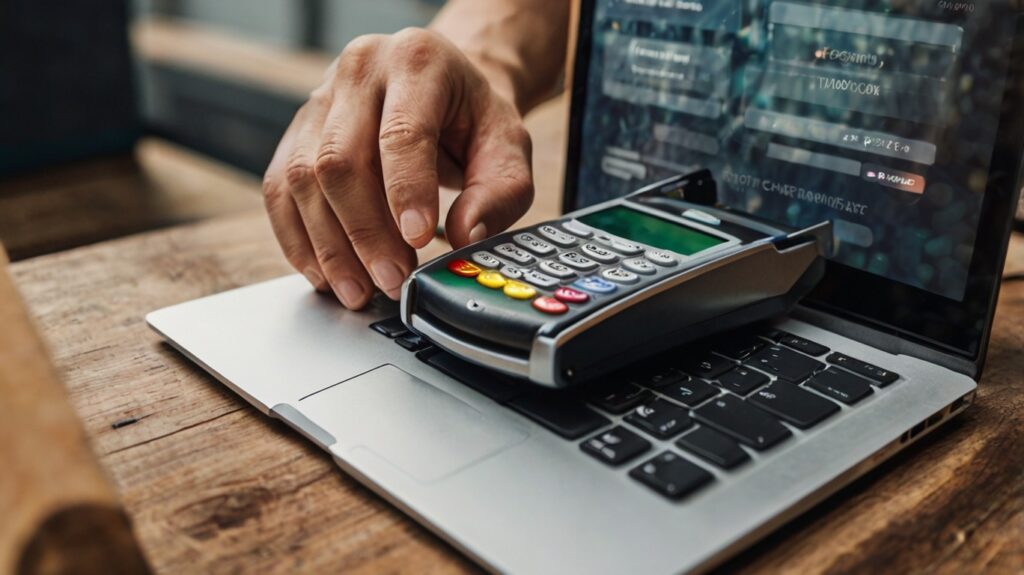By alphacardprocess May 29, 2025

A lot of people dream of starting their own business, but not many actually know where and how to start a business. The process can be intimidating especially if you’re new to the process and starting from scratch. But here’s the bright side: Successful entrepreneurs aren’t lucky. They are standing on firm ground.
The entrepreneur who wants to start a business starts by creating a clear roadmap. Every step count from brainstorming to establishing operations and earning the trust of customers. Whether you’re starting an online store, offering a service or a product, it is important to understand how and where to start.
This guide simplifies how to start a business in seven easy-to-understand steps. Let us start.
How To Start a Business: 7 Steps to Get Started
Step 1 – Validate Your Business Idea
Before you start a business, you have to be sure that your idea actually solves a problem. So too many startups collapse simply because they make something no one really needs—or because they enter the market when there are already too many other providers. The purpose of validation is to ensure that your business idea is worth the time, money, and effort required to start it.
Understand the Problem You’re Solving
The number one way to start a business is to find a particular pain point. Imagine what really irritates people, or what might make their lives easier. Reach out directly to potential customers once you have an idea. Interview them. Run quick online surveys. Ask what solutions they’re currently using and what’s still missing. Genuine insights from real people will give you the ability to shape your offering into something truly valuable.
Do Market Research
Then evaluate the company’s market. Research about your competitors, like what are they getting right? Where are the gaps? Compare their price strategies, customer reviews and brand activities. Leverage tools such as Google Trends to understand demand trends, and platforms like SEMrush or Ubersuggest to check search volume and keyword difficulty. If your plan is to open a business that makes a difference, this step is essential.
Check Profitability Potential
Even the best idea in the world won’t work if it can’t make money. Estimate your start-up expenses, from tools and licenses to marketing. Next, project your potential revenue based on pricing and customer base. Avoid markets that are too crowded or in decline. The best situation when you launch a business is that demand is on the rise and competitors have failed to corner the market.
Step 2 – Create a Business Plan
After validating Ideation is the next stage to start a business with planning the same. Your business plan is like a map — it explains what you plan to do, who you will be doing it for, and how things will work financially. You don’t need a 40 page document, but you need some clarity, focus, and reality check.

Key Sections to Include
Prepare a business plan detailing the following:
- Executive Summary – This is where you give a brief summary of your business idea, goals and reasons why you believe it will be successful.
- Type of Customers – Describe who your customers are. This may include demographics, interests and purchasing behavior.
- Unique Selling Proposition (USP)- What do you have that your competition doesn’t? What reason would someone have to buy from you instead of a competitor?
- Marketing Plan – Describe how you will bring in, and keep users – social media, SEO, ads, email campaigns, whatever.
- Financial Plan – Summarize revenue, expenses, pricing, and break-even analysis.
- Operational Plan – This is where you talk about how your business will operate. This applies to employees, vendors, and technology.
Why a Business Plan Matters?
If you’re ready to start a business that will stand the test of time, clarity is key. A business plan is an anchor for your ideas. It makes you focus on what’s important. Plus, if you ever go for a loan or financing, investors will ask for it. Above and beyond all of that, it’s your personal guide—a guidebook that will keep you grounded in times of change, and help you see how far you’ve come.
Making a plan sooner rather than later also reduces any risk. It makes you have to think about what you’re doing and approach it with a more intelligent design before you put so much in it.
Step 3 – Choose the Right Legal Structure
Picking the right legal structure is critical when you plan to start a business. Your structure affects taxes, liability, paperwork, and flexibility for the long term. That’s not just a formality — it determines how the law and government view your business.
Common Business Structures
- Sole Proprietorship: The most basic type of business. There’s no owner other than you, and you’re responsible for everything.
- Partnership: When two or more individuals own a business together. They can be general or limited in terms of control and liability.
- Limited Liability Company (LLC): Common for new businesses. It offers liability protection and pass-through taxation. Easy to form and manage.
- Corporation: Best for raising funds or becoming a public company. Provides robust liability protection but adds more regulation and taxation.
Consider Legal and Tax Implications
Once you are ready to start a business, decide how much personal risk you are willing to assume. A sole proprietorship is low-cost and easy but does not afford any liability protection. An LLC or corporation protects your personal assets, which is preferable if you encounter legal problems in your business.
Taxes also vary by structure. For sole proprietorships and partnerships, the tax is paid once; for corporations, there is potential for double taxation. In many ways, LLCs offer flexibility and protection.
Finally, set-up costs and paperwork count. Some are cheaper and easier to maintain. Spend a little time thinking about which is best for your vision, your budget and your comfort level with risk before you get started.
Step 4 – Register Your Business and Secure Permits
When you’ve made the decision to start a business, the next important step is to get your company officially registered. That gives you legal recognition and can stave off issues later.

Choose and Register a Business Name
Choose a unique name that relates to your brand. Verify domain availability to get your new site online.
Obtain Licenses and Permits for Your Business
Licenses differ by industry and location. You may require permits from the federal, state and local government. If you work in food service, child care or finance, you can expect more regulatory requirements. Be sure to check with your local government.
Step 5 – Set Up Your Finances
When you start a business, you need to have good financial systems. Planning your money ahead of time can help keep you out of a financial mess.
Open a Business Bank Account
Separate personal and business money. This not only makes accounting easier, but protects your personal assets. And it fosters credibility with customers and suppliers.
Get an EIN (Employer Identification Number)
This is like a Social Security number for your business. It’s required if you plan to hire employees, form an LLC or corporation, or file federal taxes.
Use Accounting Software
Apps like QuickBooks, Wave, or FreshBooks help you keep track of expenses, create invoices, and get ready for tax season. These systems scale with your business and avoid human error.
Step 6 – Select a Reliable Payment Processor
One thing you need to know before you start a business, especially one that sells online, is a reliable payment processor. It affects your ability to receive money, provide service and prevent disputes.
Why It Matters?
A great processor means easy transactions and quick payouts. It cuts fraud, eliminates chargebacks-and provides customers with the payment flexibility they demand-whether that’s credit cards, PayPal, or Apple Pay.

What to Look For?
Select a company with high approval rates and had good prices. It should be simple to integrate with your website or platform such as Shopify or Wix. Bonus if it includes recurring billing for subscriptions and digital wallets for convenience. Learn why e-wallets and cashless transactions are growing more popular.
A few popular options include:
- Stripe: Ideal for those with custom setups and tech know-how.
- PayPal: Recognized by customers and trusted.
- Square: Best for in-person and mobile sales.
- Authorize. Net: Dependable and secure
- PaymentCloud: Good for high-risk businesses.
Compare features, fees and risk support to see what suits your model best.
Step 7 – Build and Launch Your Brand
Now comes the exciting part. Starting a business is one thing, but now you have to shape how the world perceives it. Your brand is who you are — let’s make it memorable.
Design a Strong Visual Identity
Your logo, colors and type options should communicate your mission and audience. Stick to the same visuals on your website, social media, invoicing or email signature. A strong brand is established as time passes in order to build trust and recognition.
Create an Online Presence
Regardless of the business you are in, always make your business searchable. You could create a streamlined and professional website on WordPress, Wix or Shopify. Create social media accounts and engage with your fans by posting regularly. Create a Google Business Profile to increase local visibility and local SEO.
Launch with Purpose
Don’t rush full deployment. Begin with a beta or soft launch to a limited audience. Collect feedback, make appropriate adjustments and iterate. Use this phase to iron out operational kinks and ensure a better experience for a wider market.
Bonus Tips for New Entrepreneurs
Here are some practical tips for anyone ready to start a business and get ahead.
Watch for Hidden Fees
Payment processors might impose charges such as setup fees, per-transaction charges and refund penalties. Read the fine print. Steer clear of those who have harsh contract terms or penalties for cancelation. Know what the monthly minimums and the chargeback fees are.
Start Lean and Scale
Remember that you don’t have to invent everything in one go. Concentrate on an MVP to validate the market. Instead of hiring full-time employees early on, use freelancers or contractors. Automate your admin with tools for invoicing and email follow ups to save time and money.
Build Relationships Early
Networking allows you to kick off a business from a position of strength. Become a part of local business or online communities. Don’t be afraid to ask mentors and work with colleagues. Collect testimonials and online reviews as soon as possible as they build social proof fast.
Mistakes to Avoid When Starting from Scratch
Skipping Research or Planning
Many fail to start a business properly by skipping market research or business planning. This often leads to unclear positioning and wasted money on ideas that don’t fit market needs. Research saves time and guides your decisions.

Choosing the Wrong Payment Provider
Picking a payment processor without checking its terms or compatibility can cause revenue loss. Account freezes or unexpected holds disrupt cash flow and hurt customer trust. Choose a provider experienced in your industry.
Undervaluing Your Product or Service
Setting prices too low out of fear can damage your profits and brand image. Base pricing on the value you deliver and market standards. Fair pricing supports sustainable growth and signals quality to customers.
Conclusion
Starting a business from scratch can feel overwhelming, but a clear structure makes it manageable. By following these 7 practical steps, you lay a solid foundation that supports growth and financial stability. One of the most critical decisions is selecting the right payment processor — it impacts your cash flow and overall operations.
A reliable, industry-savvy payment gateway prevents disruptions and builds customer trust. So, take it one step at a time, stay focused, and be patient. Your successful business journey begins with a strong, thoughtful start.
Frequently Asked Questions
1. Do I need a business plan if I’m self-funded?
Yes, even self-funded entrepreneurs benefit from a clear business plan. It helps clarify goals and keeps your efforts focused on what matters most.
2. What is the best business structure for a freelancer?
Many freelancers choose a sole proprietorship or LLC for simplicity and liability protection. Your choice depends on taxes, risks, and long-term goals.
3. How do I pick the right payment processor?
Look for ease of integration, transparent fees, strong security, and good customer support. Make sure they support your business type to avoid disruptions.
4. Can I start a business with no money?
Starting with little or no money is possible by focusing on service-based models, leveraging free tools, and growing organically over time.
5. How long does it take to launch a business from scratch?
It varies widely—anywhere from a few weeks to several months depending on the complexity and preparation. Taking time to plan saves headaches later.